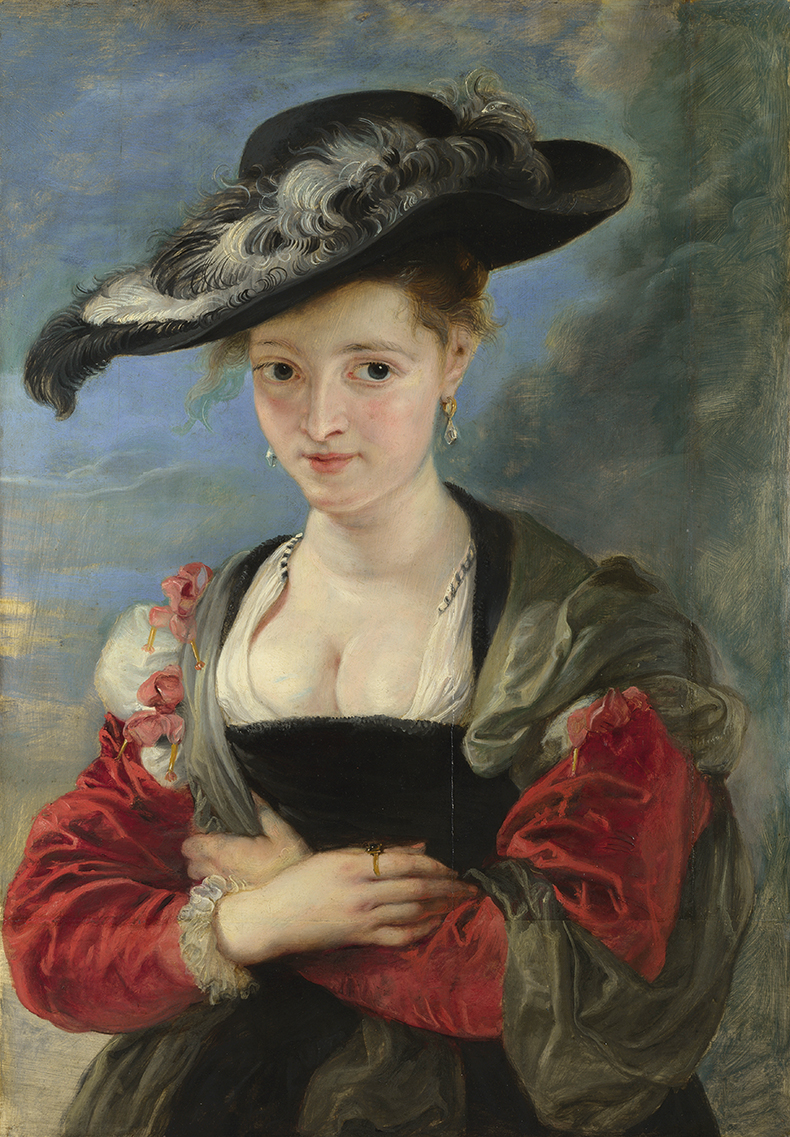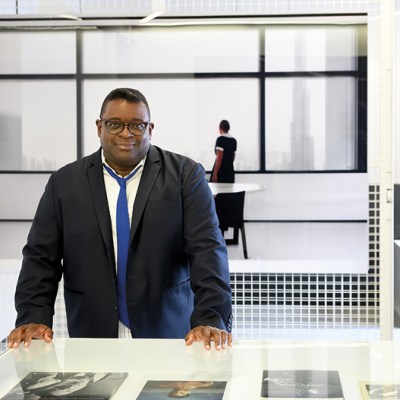From the July/August 2022 issue of Apollo. Preview and subscribe here.
As the National Gallery in London prepares for its bicentenary in 2024, the grande dame of Trafalgar Square will be under scrutiny as observers weigh up whether it remains for purpose. Gabriele Finaldi, its director, is steering the institution at a delicate time, bringing it out of the post-pandemic morass to deal with myriad issues, from funding challenges to the place of museums in modern society.
Finaldi was appointed director of the National Gallery in 2015, after 13 years as deputy director for collections and research at the Prado in Madrid. The appointment was widely welcomed, especially in light of his previous experience (he served as the National Gallery’s curator of Italian and Spanish painting from 1992 to 2002 – his catalogue raisonné of drawings by the Spanish painter Jusepe de Ribera, published in 2016, sits on the shelf behind us when we meet).
Considering the tumult of the past two years is eye-opening. Visitor figures hit six million in 2019, filling the coffers for the National Gallery which, like all major public institutions, increasingly has had to rely on commercial revenues. The national lockdowns devastated this model. When Finaldi crunches the numbers, the reality is startling.
He hopes to reach ‘about a third’ of the 2019 figure this year, adding that ‘anecdotally yes, we are beginning to see the arrival of foreign tourists’, pointing to a core European audience from countries such as Italy, Spain and France. ‘Pre-Covid, essentially our figures were 35 per cent [UK]–65 per cent [overseas]. We’ve seen that the UK resident visitorship has returned. And, in fact, the overall numbers [at this point in the year] are in the region of 40 to 50 per cent of what they were pre-Covid.’ Asian and American visitors have not yet returned en masse.
Rendering of the National Gallery’s new Sainsbury Wing lobby, designed by Selldorf Architects. Courtesy Selldorf Architects

Guiding the National Gallery on to a secure financial course must have been daunting, but Finaldi diplomatically stresses that the Cultural Recovery Fund – the government’s bailout for the sector – ‘was a very significant achievement’. Grant-in-aid for the gallery increased to £29.3m from 2020–21, up from £24.7m on the previous year.
The gallery’s annual report for 2020–21 states that it ‘will continue to endeavour to grow [its] income with the aim of being 50% self-funded by 2022/23’. This seems a difficult circle to square. ‘If our grant-in-aid is around £23m, we want to match that with our self-generated revenue, which is both commercial and philanthropic. We actually achieved this for a very brief moment just before Covid… [It] needs to gradually be built up again,’ Finaldi says.
Philanthropy is holding up, Finaldi emphasises, but the thorny issue of sponsors is an increasing concern for museum heads who face opprobrium for partnering with controversial donors and benefactors. In May, the National Gallery was the latest UK institution to remove the Sackler family name from its walls (some members of the dynasty have become indelibly linked to the global opioid epidemic). The gallery and the Dr Mortimer and Theresa Sackler Foundation agreed that after ‘30 years the naming of Room 34 as the Sackler Gallery should come to an end’ – the family moniker is now ignominiously absent.
‘I think it has become more difficult,’ Finaldi says. ‘There are certain areas that are becoming no-gos for cultural institutions. There’s naturally a lot of concern about an institution’s reputation: who are the people we work with? What do the public expect of us? What do our own staff expect of us? It’s another element that has become more prominent in recent years. We need to be confident that we’re working with appropriate partners, and that the partners think we are the right institution for them as well.’
How the National Gallery is perceived, and what it stands for beyond its hallowed portico terrace, is a complex debate but Finaldi has never held back about how museums should engage with wider political issues, especially in the wake of the Black Lives Matter protests that took place in 2020 (he later told the Times that ‘a museum can’t stand aloof from the concerns of society’). What is his view on the debacle over the show ‘Philip Guston Now’, which was postponed in late 2020 by four museums, including the Tate and the National Gallery of Art in Washington, D.C., in response to concerns about racial sensitivity?
‘I think context is extremely important. The National Gallery of Art is a big federal institution. I think there’s sometimes the risk for all of us in museums to be a little afraid and it’s necessary at times to be bold and take it on the chin. That’s an uncomfortable place for anyone to be in. And sometimes your trustees don’t want you to be in that position, either. I think we need to be brave in our programming and confident in our artists as well.’
Portrait of Susanna Lunden (?) (‘Le Chapeau de Paille’), (c. 1622–25), Peter Paul Rubens. National Gallery, London

A gallery of dead European artists as such should not be dismissed that easily, he says. ‘[The gallery of dead white males] is a phrase that people often whip out. I find that limiting, because I think what we’re looking at is an artistic tradition, which is vibrant and addresses all the big questions that confront every society and generation.’
The recent exhibition of works by the American artist Kehinde Wiley was full of young Black people poring over works such as the six-screen film installation, Prelude (2021), when I visited. A show of Lucian Freud works in the autumn (‘New Perspectives’), spanning a lifetime of work seems slightly out of kilter, but Finaldi points out that ‘he’s an artist who fits into the narrative of European painting in a way it’s told at the National Gallery. It’s about figuration and the human form as the object of artistic exploration and endeavour.’ This raises the question of how long the blockbuster exhibition model, buffeted by numerous headwinds such as high costs and calamitous carbon footprints, can last. Things are changing; loan requests are coming in for exhibitions lasting six months instead of the standard 16 weeks, while there is a focus on strategic relationships between museums that have long-term joint interests, he says. ‘It’s a challenge as we go ahead, but I certainly think we must continue doing an intelligent and perfectly appropriate, ambitious exhibition programme.’
What people are prepared to pay for will become more important as museums are pressured by central government to monetise their assets and activities. Eyebrows were raised in 2020 when the National Gallery announced a charge of £8 for an online tour of its Artemisia Gentileschi show with the curator, Letizia Treves, prompting charges of elitism. Ticket prices for blockbuster shows are also creeping skywards across institutions; full-price admission to ‘Raphael’ costs £26 at the weekend. Finaldi recites a few home truths in response. ‘First of all, the National Gallery is free. The National Gallery is a blockbuster of an exhibition that’s open every day of the year with the most astounding works of art. I think that’s a very important thing to bear in mind. Secondly, most of our exhibitions are free. The exhibitions that we charge for are ones that are very expensive to put on.’ Throughout our talk, he continually champions free admission.
The current blockbuster, ‘Raphael’, is being exhibited in the Wilkins Building, the historic hub of the gallery. It will house temporary exhibitions while the Sainsbury Wing is overhauled as part of the bicentenary initiative known as NG200. The foyer of the Sainsbury wing often felt dark and cramped, so this upgrade is long overdue. ‘The Sainsbury Wing became our main entrance; it’s where the collection starts. Remember, we are essentially a chronologically arranged collection, taking you through European painting from the 13th to the beginning of the 20th century. What we are very conscious of is that the “welcome” is not of the same calibre as the collection,’ Finaldi says.
Self Portrait in a Straw Hat (1782), Élisabeth-Louise Vigée Le Brun. National Gallery, London

The Art Newspaper reported that works from the permanent collection had to be cleared to accommodate the temporary exhibition space, disrupting national groupings in the hang. But there is an upside. ‘You notice different things, picking up similarities you hadn’t seen before,’ Finaldi says. ‘I’ve always wondered why, for example, we have the wonderful Elisabeth Vigée-Lebrun Self-Portrait [in a Straw Hat]. Vigée-Lebrun talks in her diary of seeing in Brussels Rubens’ Le Chapeau de Paille [Portrait of Susanna Lunden]… Both paintings are in the National Gallery. They have never been seen side by side.’
A research centre and much-needed members’ room in the Wilkins building also form part of the ingenious site overhaul, designed by Selldorf Architects (this phase should be completed around spring 2025). The events line-up for NG200, including a national public art commission from Jeremy Deller, looks promising. ‘I hope that Jeremy will come up with something joyful and participatory,’ Finaldi says. The total cost of the NG200 programme is £95m (£85m on capital projects); the gallery has confirmed commitments of £50m from a number of leading supporters, trusts associated with the National Gallery and from its own reserves. ‘We do not intend to ask the government for any additional funding for NG200,’ says a spokesman.
The first full-scale exhibition of 14th century Sienese art outside Italy also forms part of the NG200 programming, along with ‘National Treasures’ – a series of 12 exhibitions launching across 12 UK regions, drawing on key works from the gallery collection. Thirty million people should subsequently be only an hour away from these National Gallery masterpieces. Finaldi says, ‘We want to share these pictures with the entire population. We’re really saying, “This is your National Gallery,”’ he adds. All eyes will be on him, and the bicentenary legacy he shapes, in the coming years.
From the July/August 2022 issue of Apollo. Preview and subscribe here.



